Pt-Amorphous Barium Aluminum Oxide/Carbon Catalysts for an Enhanced Methanol Electrooxidation Reaction
Abstract
1. Introduction
2. Results and Discussion
2.1. Effect of Different Calcining Temperatures on the MOR of the Catalyst
2.2. Effect of Different Ratios of Ba and Al Precursors on MOR
3. Materials and Methods
3.1. Chemicals and Materials
3.2. Preparation of Pt–Barium Aluminum Oxide/C Catalysts
3.3. Material Characterization
3.4. Electrochemical Measurements
4. Conclusions
Author Contributions
Funding
Conflicts of Interest
References
- Wilson, M.S.; Gottesfeld, S. Thin-film catalyst layers for polymer electrolyte fuel cell electrodes. J. Appl. Electrochem. 1992, 22, 1–7. [Google Scholar] [CrossRef]
- Du, B.; Rabb, S.A.; Zangmeister, C.; Tong, Y.Y. A volcano curve: Optimizing methanol electro-oxidation on Pt-decorated Ru nanoparticles. Phys. Chem. Chem. Phys. 2009, 11, 8231–8239. [Google Scholar] [CrossRef] [PubMed]
- Wu, G.; Li, L.; Xu, B.Q. Effect of electrochemical polarization of PtRu/C catalysts on methanol electrooxidation. Electrochim. Acta 2004, 50, 1–10. [Google Scholar] [CrossRef]
- Chen, X.; Wang, H.; Wang, Y.; Bai, Q.; Gao, Y.; Zhang, Z. Synthesis and electrocatalytic performance of multi-component nanoporous PtRuCuW alloy for direct methanol fuel cells. Catalysts 2015, 5, 1003–1015. [Google Scholar] [CrossRef]
- Lee, Y.W.; Ko, A.R.; Han, S.B.; Kim, H.S.; Park, K.W. Synthesis of octahedral Pt–Pd alloy nanoparticles for improved catalytic activity and stability in methanol electrooxidation. Phys. Chem. Chem. Phys. 2011, 13, 5569–5572. [Google Scholar] [CrossRef]
- Jeon, M.K.; Lee, K.R.; Daimon, H.; Nakahara, A.; Woo, S.I. Pt45Ru45M10/C (M = Fe, Co, and Ni) catalysts for methanol electro-oxidation. Catal. Today 2008, 132, 123–126. [Google Scholar] [CrossRef]
- Ren, X.; Lv, Q.; Liu, L.; Liu, B.; Wang, Y.; Liu, A.; Wu, G. Current progress of Pt and Pt-based electrocatalysts used for fuel cells. Sustain. Energy Fuels 2020, 4, 15–30. [Google Scholar] [CrossRef]
- Cordeiro, G.L.; de Camargo, E.F.; Santos, M.C.L.; Pereira, C.V.; Ussui, V.; de Lima, N.B.; Neto, A.O.; Lazar, D.R.R. Improved Pt/CeO2 electrocatalysts for ethanol electro-oxidation. Int. J. Electrochem. Sci. 2018, 13, 6388–6401. [Google Scholar] [CrossRef]
- Sun, X.; Gao, K.; Pang, X.; Yang, H.; Volinsky, A.A. Electrochemical oxidation of mthanol on Pt-SnOx/C catalysts characterized by electrochemistry methods. J. Electrochem. Soc. 2015, 162, F1540–F1548. [Google Scholar] [CrossRef]
- Naeem, R.; Ahmed, R.; Ansari, M.S. TiO2 and Al2O3 promoted Pt/C nanocomposites as low temperature fuel cell catalysts for electro oxidation of methanol in acidic media. Mater. Sci. Eng. 2014, 60, 012031. [Google Scholar] [CrossRef]
- Justin, P.; Charan, P.H.K.; Rao, G.R. High performance Pt–Nb2O5/C electrocatalysts for methanol electrooxidation in acidic media. Appl. Catal. B-Environ. 2010, 100, 510–515. [Google Scholar] [CrossRef]
- Palani, R.J.; Shanthi, K.; Velayutham, G. Enhanced methanol electro-oxidation over in-situ carbon and graphene supported one dimensional NiMoO4 nanorods. J. Power Sources 2015, 277, 350–359. [Google Scholar] [CrossRef]
- Tan, Q.; Du, C.; Sun, Y.; Du, L.; Yin, G.; Gao, Y. Nickel-doped ceria nanoparticles for promoting catalytic activity of Pt/C for ethanol electrooxidation. J. Power Sources 2014, 263, 310–314. [Google Scholar] [CrossRef]
- Liu, Y.; Liu, C.; Yu, X.; Osgood, H.; Wu, G. CeO2-modified α-MoO3 nanorods as a synergistic support for Pt nanoparticles with enhanced COads tolerance during methanol oxidation. Phys. Chem. Chem. Phys. 2017, 19, 330–339. [Google Scholar] [CrossRef] [PubMed]
- Scofield, M.E.; Koenigsmann, C.; Bobb-Semple, D.; Tao, J.; Tong, X.; Wang, L.; Lewis, C.S.; Vukmirovic, M.; Zhu, Y.; Adzic, R.R.; et al. Correlating the chemical composition and size of various metal oxide substrates with the catalytic activity and stability of as-deposited Pt nanoparticles for the methanol oxidation reaction. Catal. Sci. Technol. 2016, 6, 2435–2450. [Google Scholar] [CrossRef]
- Bai, Y.; Wu, J.; Qiu, X.; Xi, J.; Wang, J.; Li, J.; Zhu, W.; Chen, L. Electrochemical characterization of Pt-CeO2/C and Pt-CexZr1-xO2/C catalysts for ethanol electro-oxidation. Appl. Catal. B-Environ. 2007, 73, 144–149. [Google Scholar] [CrossRef]
- An, N.; Yuan, X.; Pan, B.; Li, Q.; Li, S.; Zhang, W. Design of a highly active Pt/Al2O3 catalyst for lowtemperature CO oxidation. RSC Adv. 2014, 4, 38250–38257. [Google Scholar] [CrossRef]
- Dicks, O.A.; Cottom, J.; Shluger, A.L.; Afanas’ev, V.V. The origin of negative charging in amorphous Al2O3 films: The role of native defects. Nanotechnology 2019, 30, 205201. [Google Scholar] [CrossRef]
- Gu, D.M.; Chu, Y.Y.; Wang, Z.B.; Jiang, Z.Z.; Yin, G.P.; Liu, Y. Methanol oxidation on Pt/CeO2–C electrocatalyst prepared by microwave-assisted ethylene glycol process. Appl. Catal. B-Environ. 2011, 102, 9–18. [Google Scholar] [CrossRef]
- Brandhorst, M.; Cristol, S.; Capron, M.; Dujardin, C.; Vezin, H.; Le bourdon, G.; Payen, E. Catalytic oxidation of methanol on Mo/Al2O3 catalyst: An EPR and Raman/infrared operando spectroscopies study. Catal. Today 2006, 113, 34–39. [Google Scholar] [CrossRef]
- Das, S.; Kundu, P.P. Pt–Ru/Al2O3–C nanocomposites as direct methanol fuel cell catalysts for electrooxidation of methanol in acidic medium. RSC Adv. 2015, 5, 93539–93546. [Google Scholar] [CrossRef]
- Zhang, X.; Zhao, M.; Ye, Z.; Liu, S.; Chen, Y. BaO-Modified Pd-based Catalyst for Methanol Oxidation. Adv. Mat. Res. 2013, 610–613, 577–580. [Google Scholar] [CrossRef]
- Chen, L.; Niu, X.; Li, Z.; Dong, Y.; Wang, D.; Yuan, F.; Zhu, Y. The effects of BaO on the catalytic activity of La1.6Ba0.4NiO4 in directdecomposition of NO. J. Mol. Catal. A-Chem. 2016, 423, 277–284. [Google Scholar] [CrossRef]
- Zhang, C.; Yang, H.; Sun, T.; Shan, N.; Chen, J.; Xu, L.; Yan, Y. Synthesis of three-dimensionally ordered macro-/mesoporous Pt with high electrocatalytic activity by a dual-templating approach. J. Power Sources 2014, 245, 579–582. [Google Scholar] [CrossRef]
- Silva, C.D.; Morais, L.H.; Gonçalves, R.; Matos, R.; Souza, G.L.C.; Freitas, R.G.; Pereira, E.C. The methanol and CO electro-oxidation onto Ptpc/Co/Pt metallic multilayer nanostructured electrodes: An experimental and theoretical approach. Electrochim. Acta 2018, 280, 197–205. [Google Scholar] [CrossRef]
- Piela, P.; Fields, R.; Zelenay, P. Electrochemical impedance spectroscopy for direct methanol fuel cell diagnostics. J. Electrochem. Soc. 2006, 153, A1902–A1913. [Google Scholar] [CrossRef]
- Bergamaski, K.; Pinheiro, A.L.N.; Teixeira-Neto, E.; Nart, F.C. Nanoparticle size effects on methanol electrochemical oxidation on carbon supported platinum catalysts. J. Phys. Chem. B 2006, 110, 19271–19279. [Google Scholar] [CrossRef]
- Kumar, N.; Biswas, K. Cryomilling: An environment friendly approach of preparation large quantity ultra refined pure aluminium nanoparticles. J. Mater. Res. Technol. 2019, 8, 63–74. [Google Scholar] [CrossRef]
- Teng, H.T.; Lee, T.Y.; Chen, Y.K.; Wang, H.W.; Cao, G. Effect of Al(OH)3 on the hydrogen generation of aluminumewater system. J. Power Sources 2012, 219, 16–21. [Google Scholar] [CrossRef]
- Fang, R.C.; Sun, Q.Q.; Zhou, P.; Yang, W.; Wang, P.F.; Zhang, D.W. High-performance bilayer flexible resistive random access memory based on low-temperature thermal atomic layer deposition. Nanoscale Res. Lett. 2013, 8, 92–99. [Google Scholar] [CrossRef]
- Santra, C.; Rahman, S.; Bojja, S.; James, O.O.; Sen, D.; Maity, S.; Mohanty, A.K.; Mazumderd, S.; Chowdhury, B. Barium, calcium and magnesium doped mesoporous ceria supported gold nanoparticle for benzyl alcohol oxidation using molecular O2. Catal. Sci. Technol. 2013, 3, 360–370. [Google Scholar] [CrossRef]
- Verma, A.; Basu, S. Direct alcohol and borohydride alkaline fuel cells. In Recent Trends in Fuel Cell Science and Technology; Basu, S., Ed.; Springer: New Delhi, India, 2007; pp. 157–169. [Google Scholar]
- Zhao, Y.; Chen, L.; Song, Y.; Meng, Y. Preparation of high catalytic activity and low platinum loading catalyst for methanol oxidation. Int. J. Electrochem. Sci. 2018, 13, 7370–7384. [Google Scholar] [CrossRef]
- Taguchi, M.; Takahashi, H.; Nakajima, S. Methanol oxidation activity and chemical state of platinum oxide thin film treated by electrochemical reduction. Mater. Trans. 2013, 54, 582–587. [Google Scholar] [CrossRef]
- Perevalov, T.V.; Tereshenko, O.E.; Gritsenko, V.A.; Pustovarov, V.A.; Yelisseyev, A.P.; Park, C.; Han, J.H.; Lee, C. Oxygen deficiency defects in amorphous Al2O3. J. Appl. Phys. 2010, 108, 013501. [Google Scholar] [CrossRef]
- Yang, W.; Yang, X.; Jia, J.; Hou, C.; Gao, H.; Mao, Y.; Wang, C.; Lin, J.; Luo, X. Oxygen vacancies confined in ultrathin nickel oxide nanosheets for enhanced electrocatalytic methanol oxidation. Appl. Catal. B-Environ. 2019, 244, 1096–1102. [Google Scholar] [CrossRef]
- Gu, Y.; Liu, C.; Li, Y.; Sui, X.; Wang, K.; Wang, Z. Ce0.8Sn0.2O2–δ–C composite as a co-catalytic support for Pt catalysts toward methanol electrooxidation. J. Power Sources 2014, 265, 335–344. [Google Scholar] [CrossRef]
- Zhang, G.; Yang, Z.; Zhang, W.; Wang, Y. Nanosized Mo-doped CeO2 enhances the electrocatalytic property of the Pt anode catalyst in direct methanol fuel cells. J. Mater. Chem. A 2017, 5, 1481–1487. [Google Scholar] [CrossRef]
- Meher, S.K.; Rao, G.R. Polymer-assisted hydrothermal synthesis of highly reducible shuttle-shaped CeO2: Microstructural effect on promoting Pt/C for methanol electrooxidation. ACS Catal. 2012, 2, 2795–2809. [Google Scholar] [CrossRef]
- Ma, T.Y.; Zheng, Y.; Dai, S.; Jaroniec, M.; Qiao, S.Z. Mesoporous MnCo2O4 with abundant oxygen vacancy defects as high-performance oxygen reduction catalysts. J. Mater. Chem. A 2014, 2, 8676–8682. [Google Scholar] [CrossRef]
- Zhao, X.; Zhu, J.; Liang, L.; Liao, J.; Liu, C.; Xing, W. Enhanced activity of Pt nano-crystals supported on a novel TiO2@N-doped C nano-composite for methanol oxidation reaction. J. Mater. Chem. 2012, 22, 19718–19725. [Google Scholar] [CrossRef]
- Li, Z.; He, T.; Matsumura, D.; Miao, S.; Wu, A.; Liu, L.; Wu, G.; Chen, P. Atomically Dispersed Pt on the Surface of Ni Particles: Synthesis and Catalytic Function in Hydrogen Generation from Aqueous Ammonia−Borane. ACS Catal. 2017, 7, 6762–6769. [Google Scholar] [CrossRef]
- Thomson, S.J. Catalysis on well-defined metal surfaces and nonmetallic substrates. In Catalysis; Kemball, C., Dowden, D.A., Eds.; The Chemical Society: London, UK, 1980; Volume 3, pp. 1–38. [Google Scholar]
- Scibioh, M.A.; Kim, S.K.; Cho, E.A.; Lim, T.H.; Hong, S.A.; Ha, H.Y. Pt-CeO2/C anode catalyst for direct methanol fuel cells. Appl. Catal. B-Environ. 2008, 84, 773–782. [Google Scholar] [CrossRef]
- Shepperd, S.A.; Campbell, S.A.; Smith, J.R.; Lloyd, G.W.; Ralph, T.R.; Walsh, F.C. Electrochemical and microscopic characterization of platinum-coated perfluorosulfonic acid (Nafion 117) materials. Analyst 1998, 123, 1923–1929. [Google Scholar] [CrossRef]
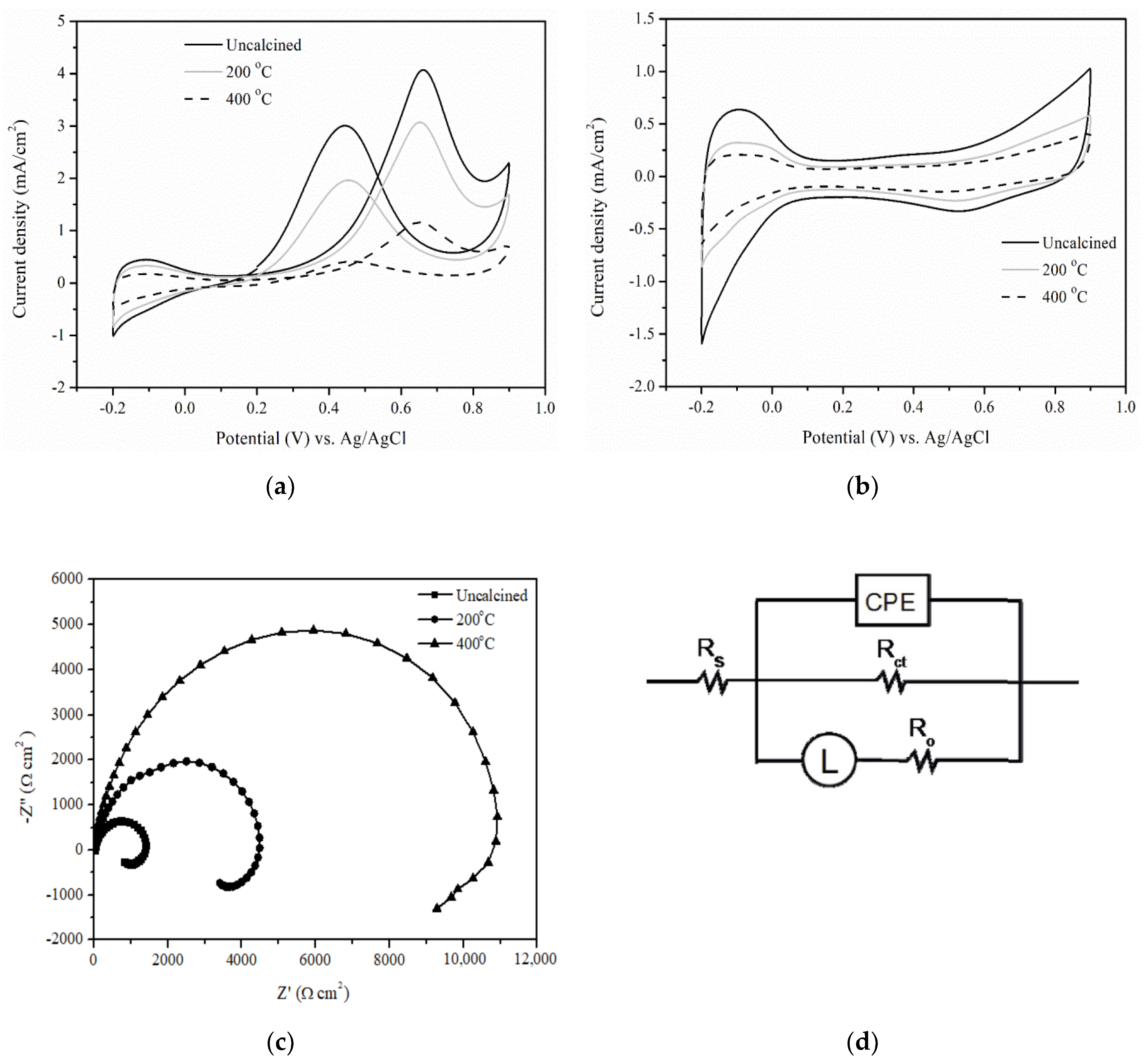
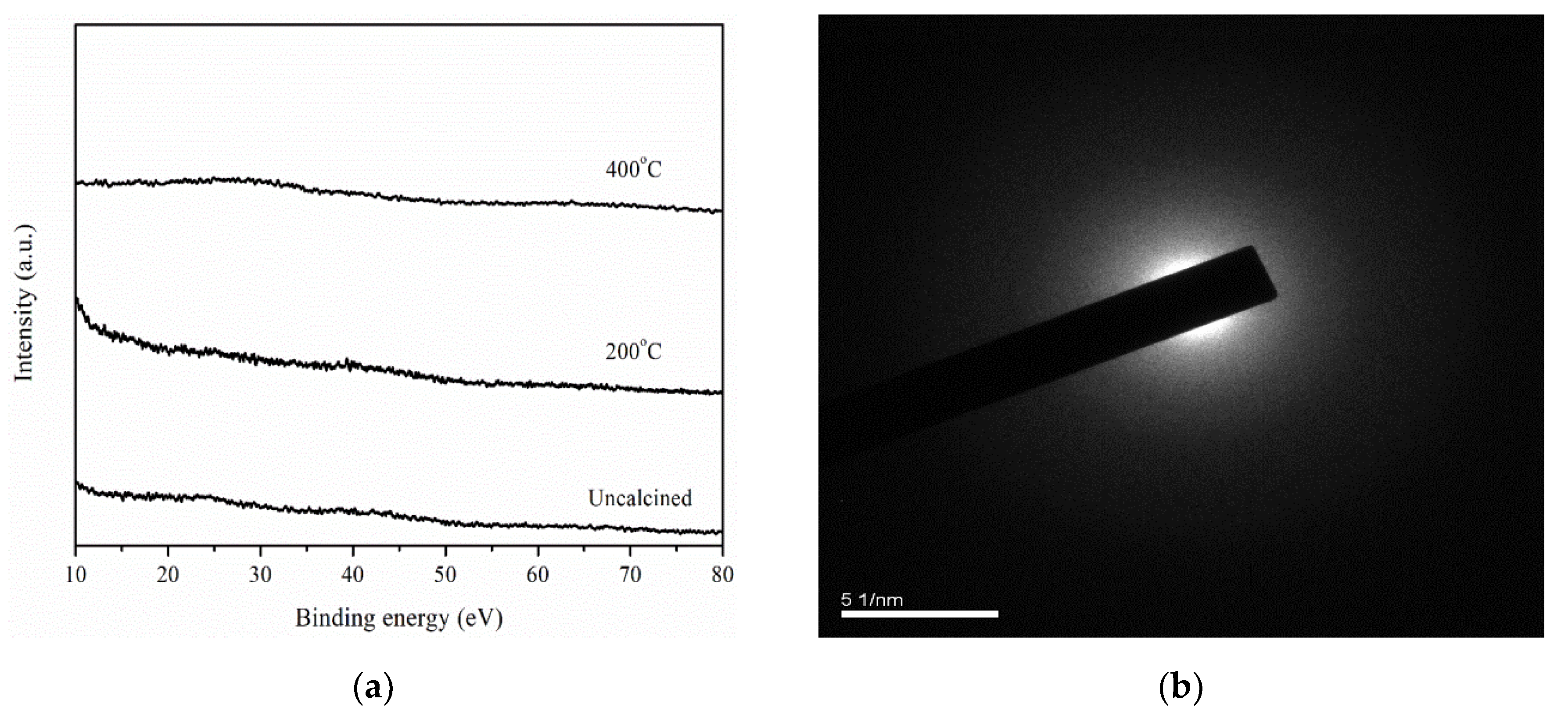
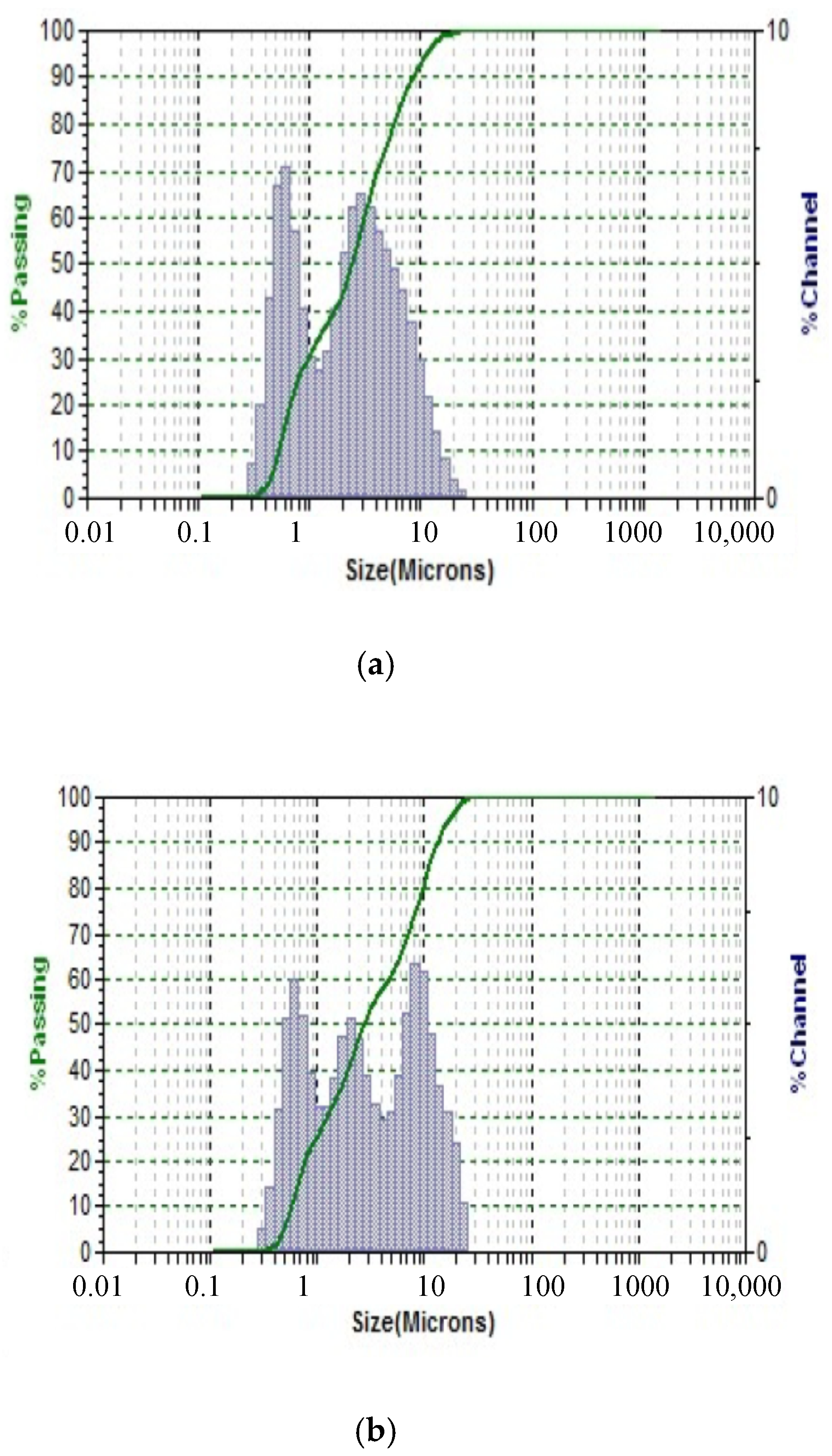
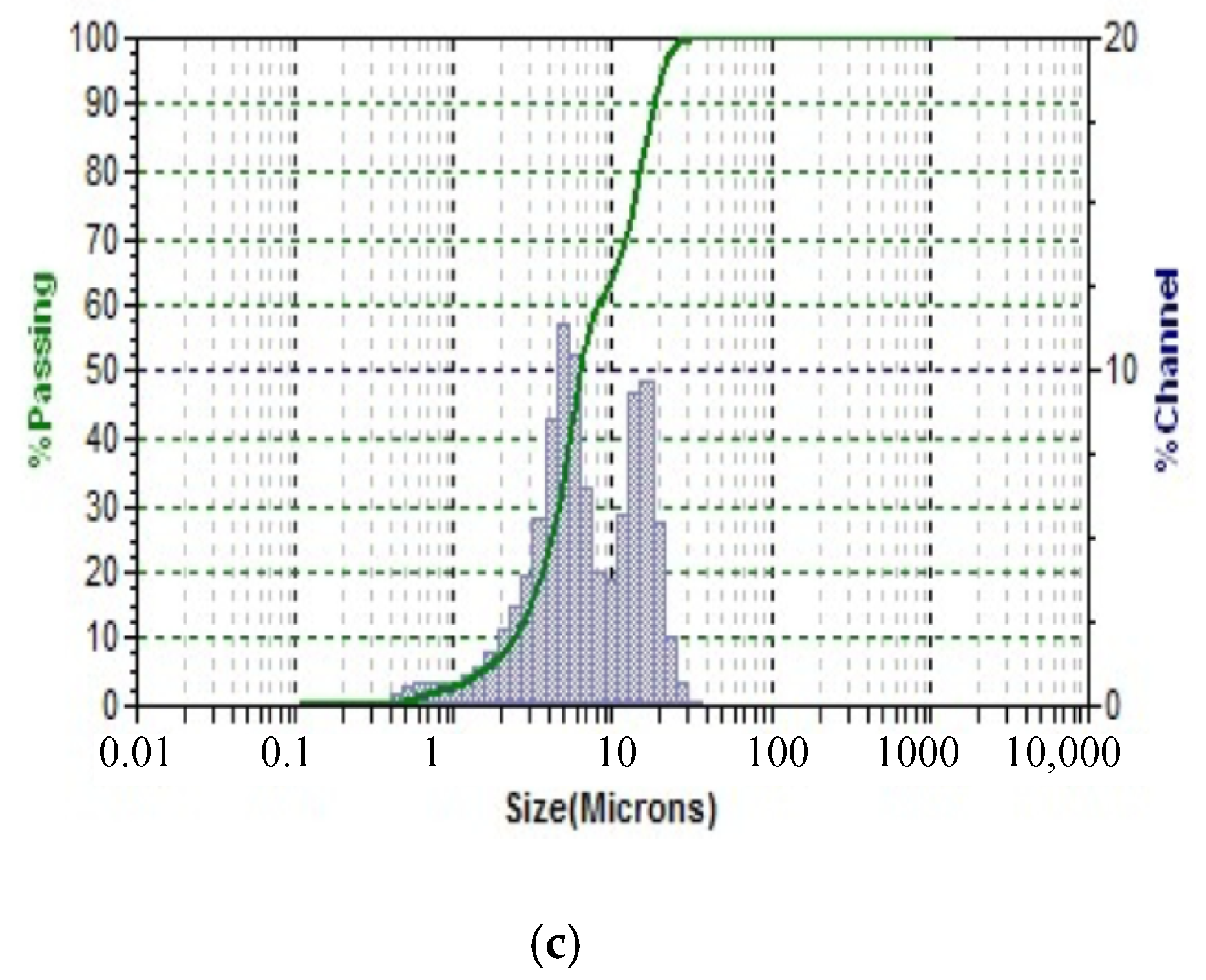
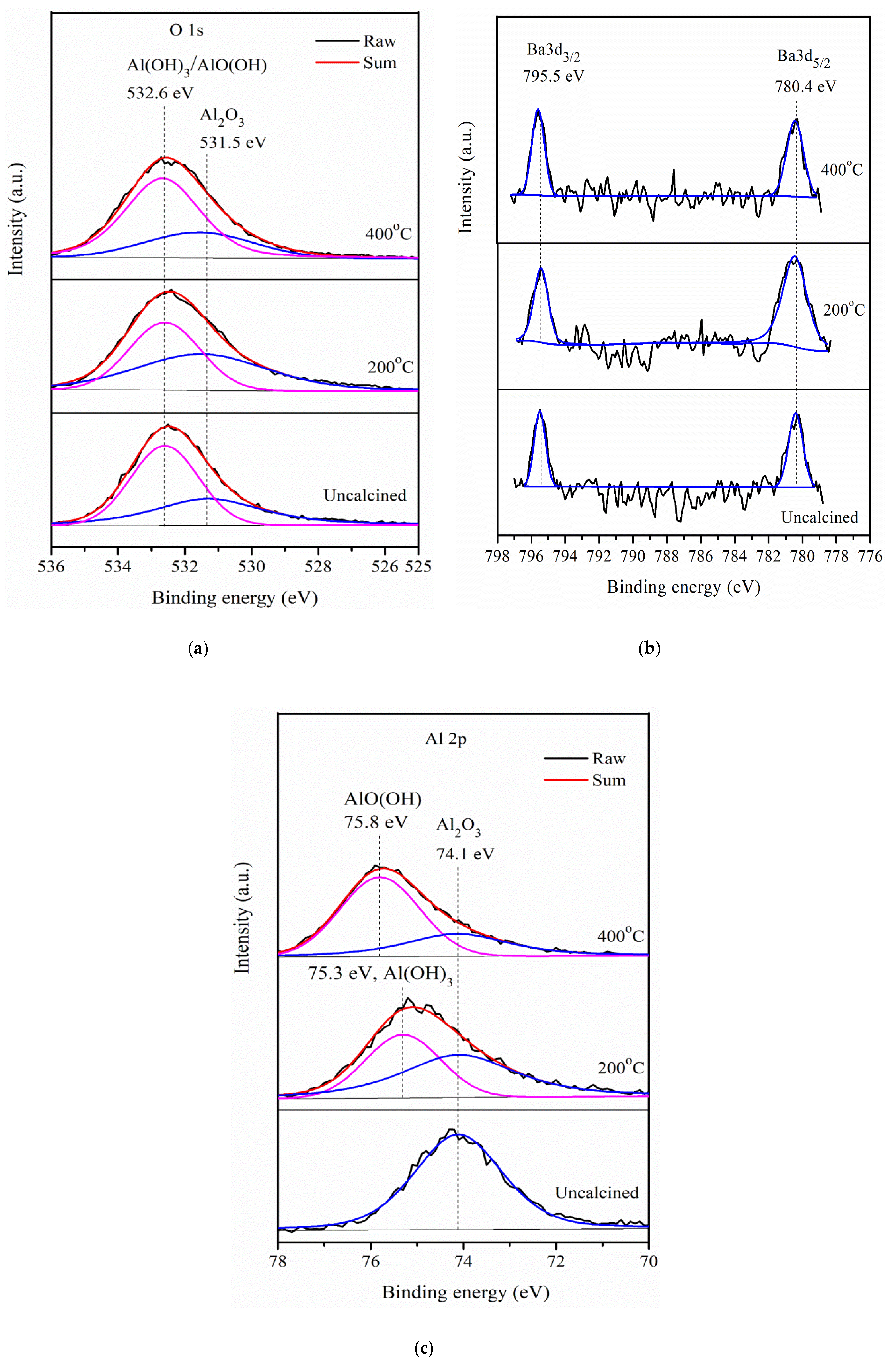
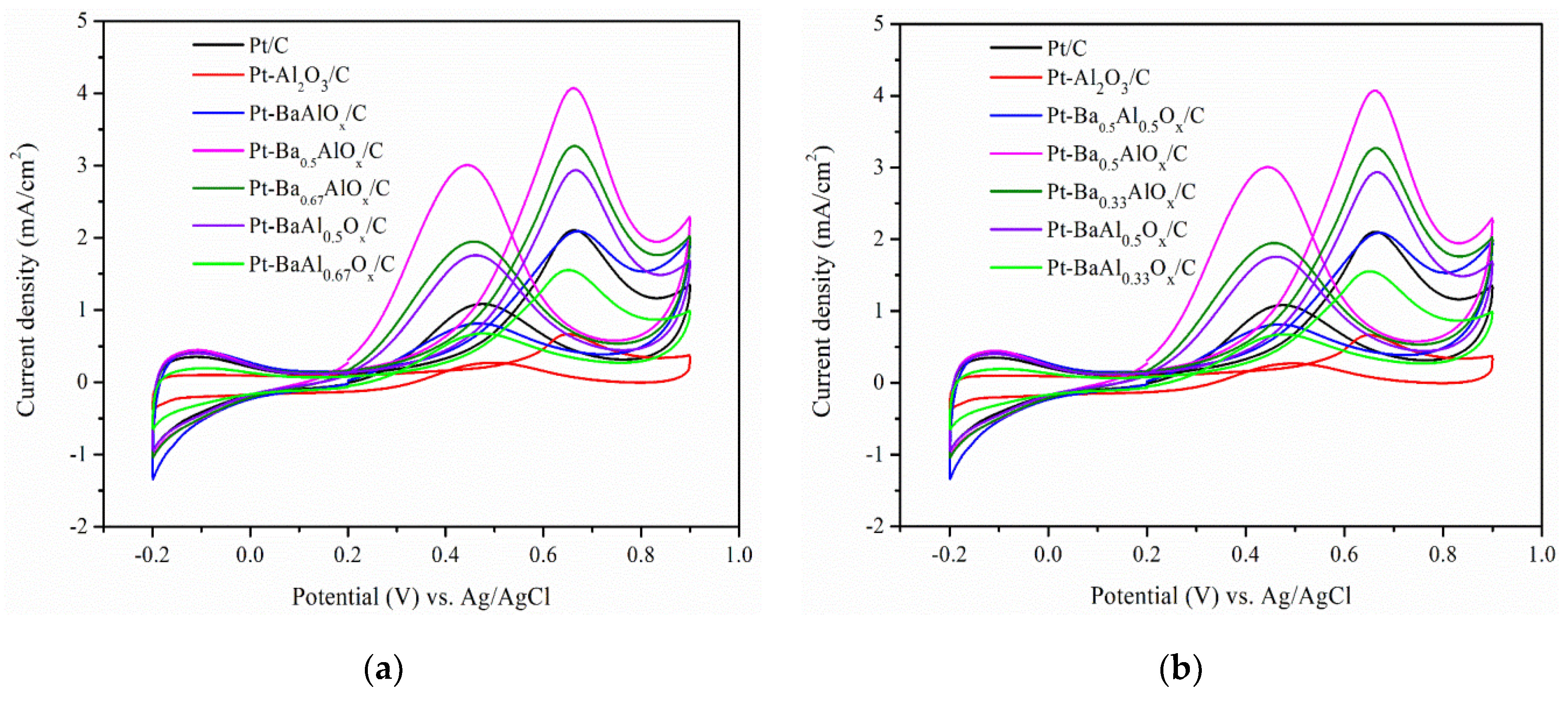
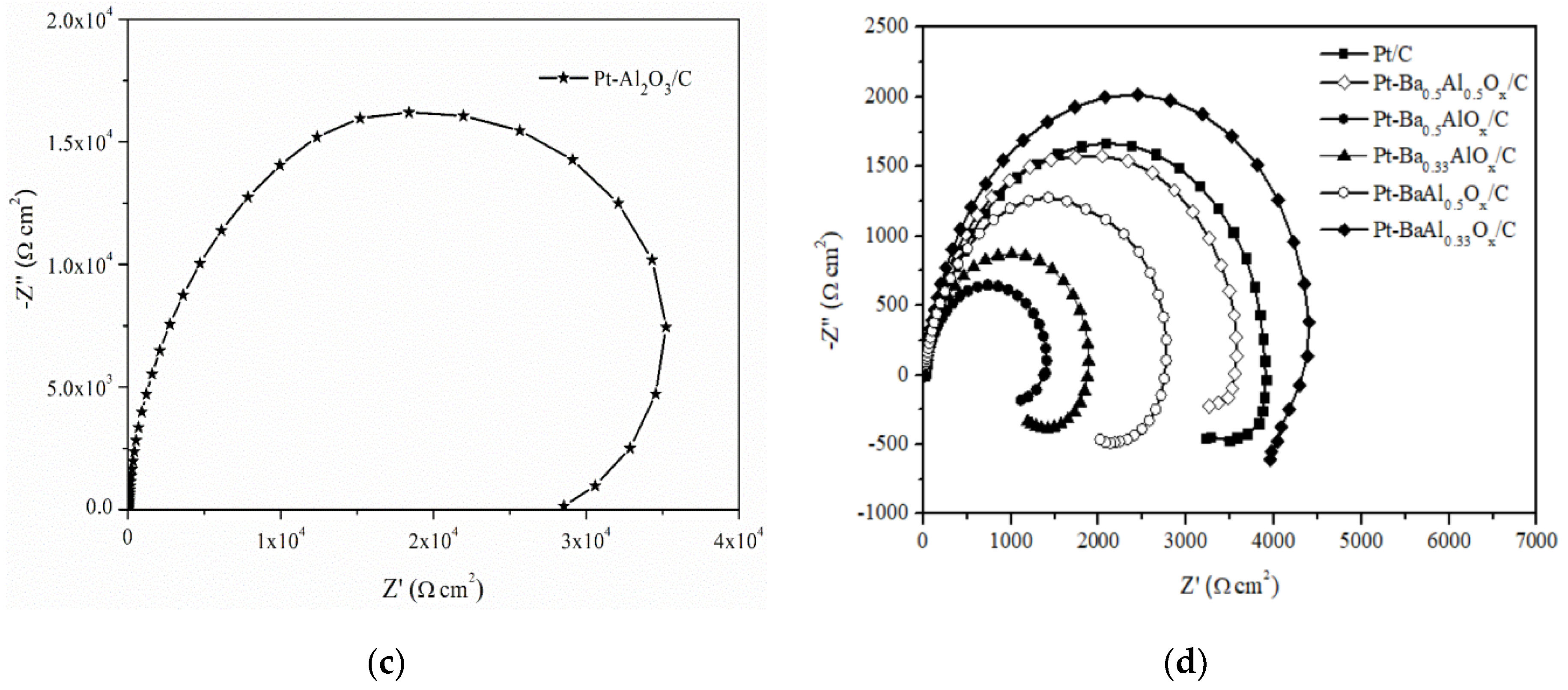
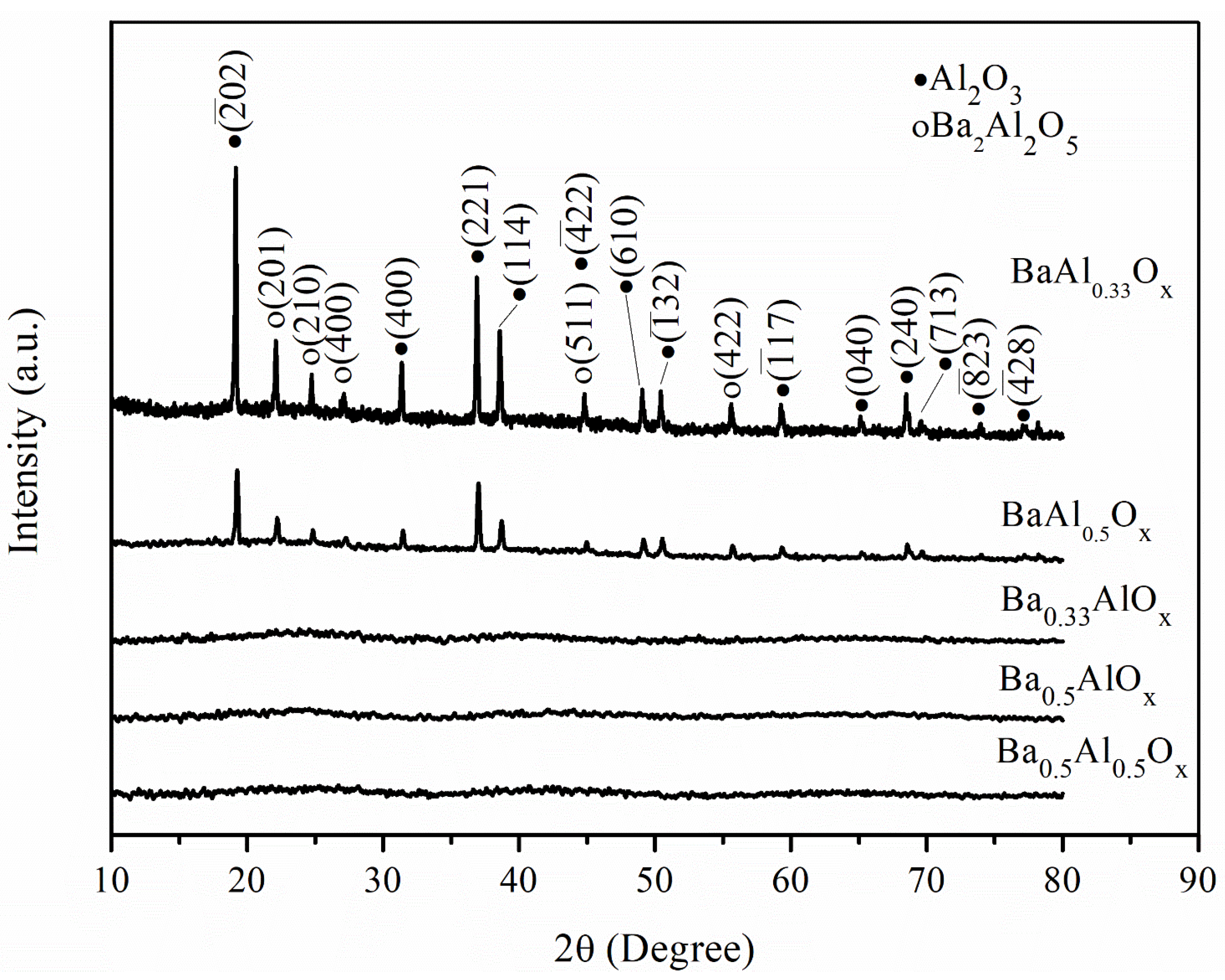
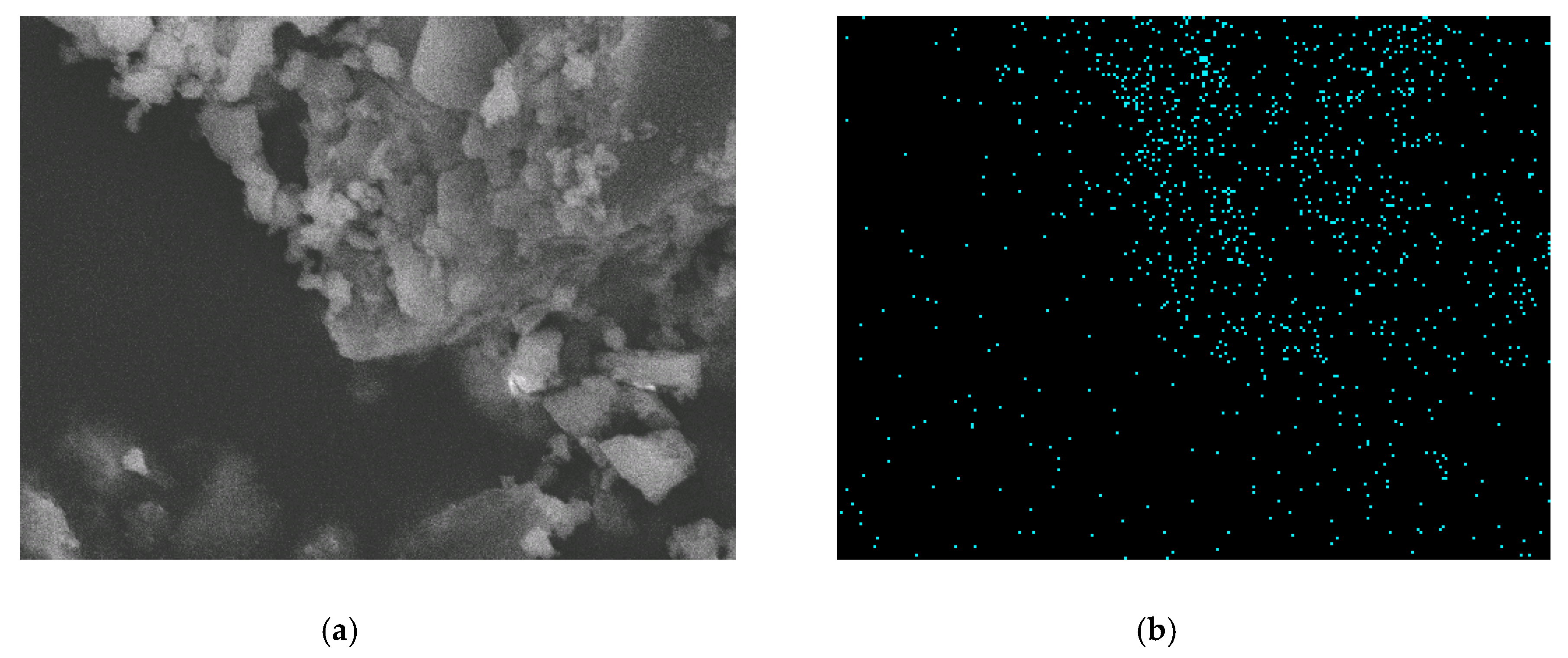

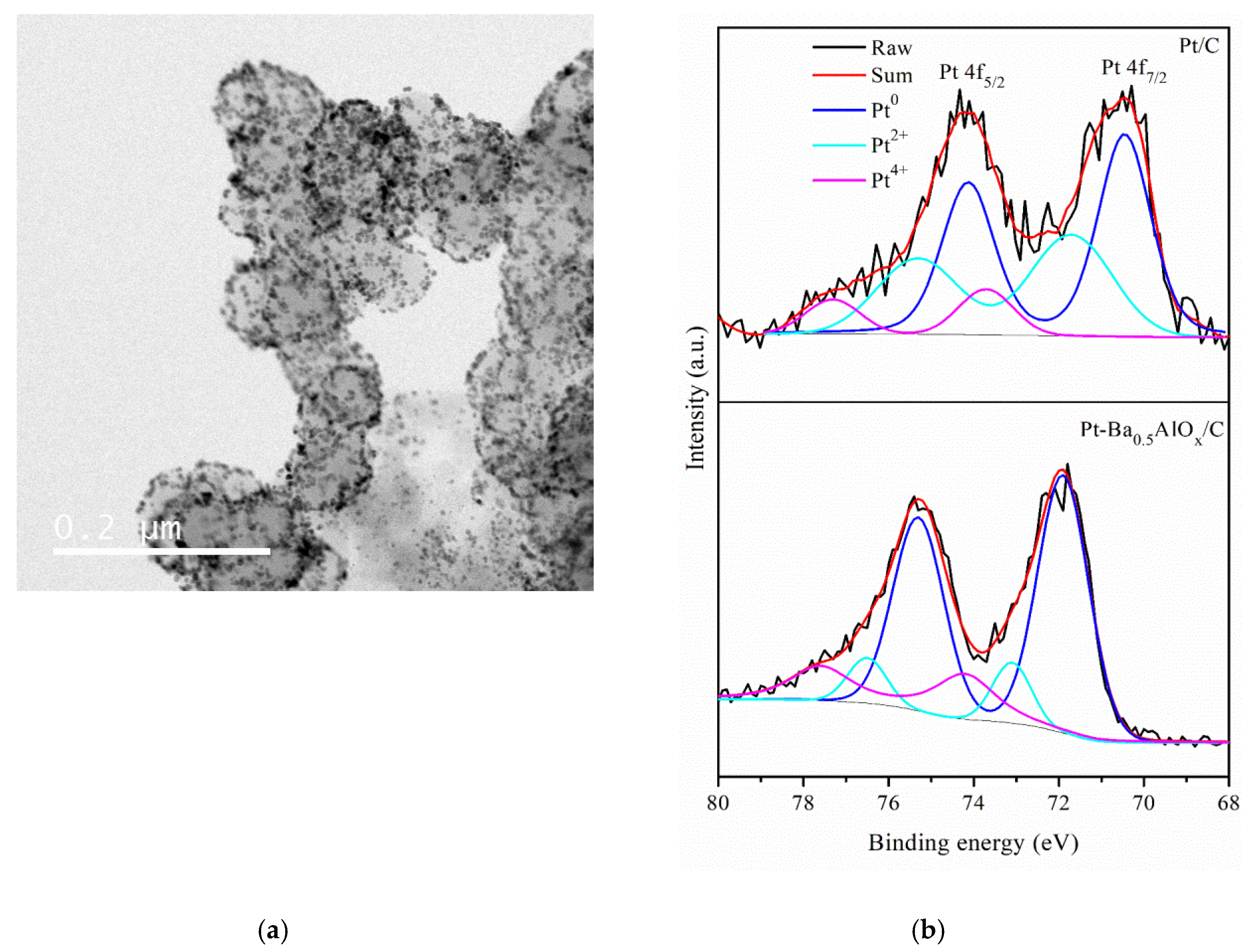
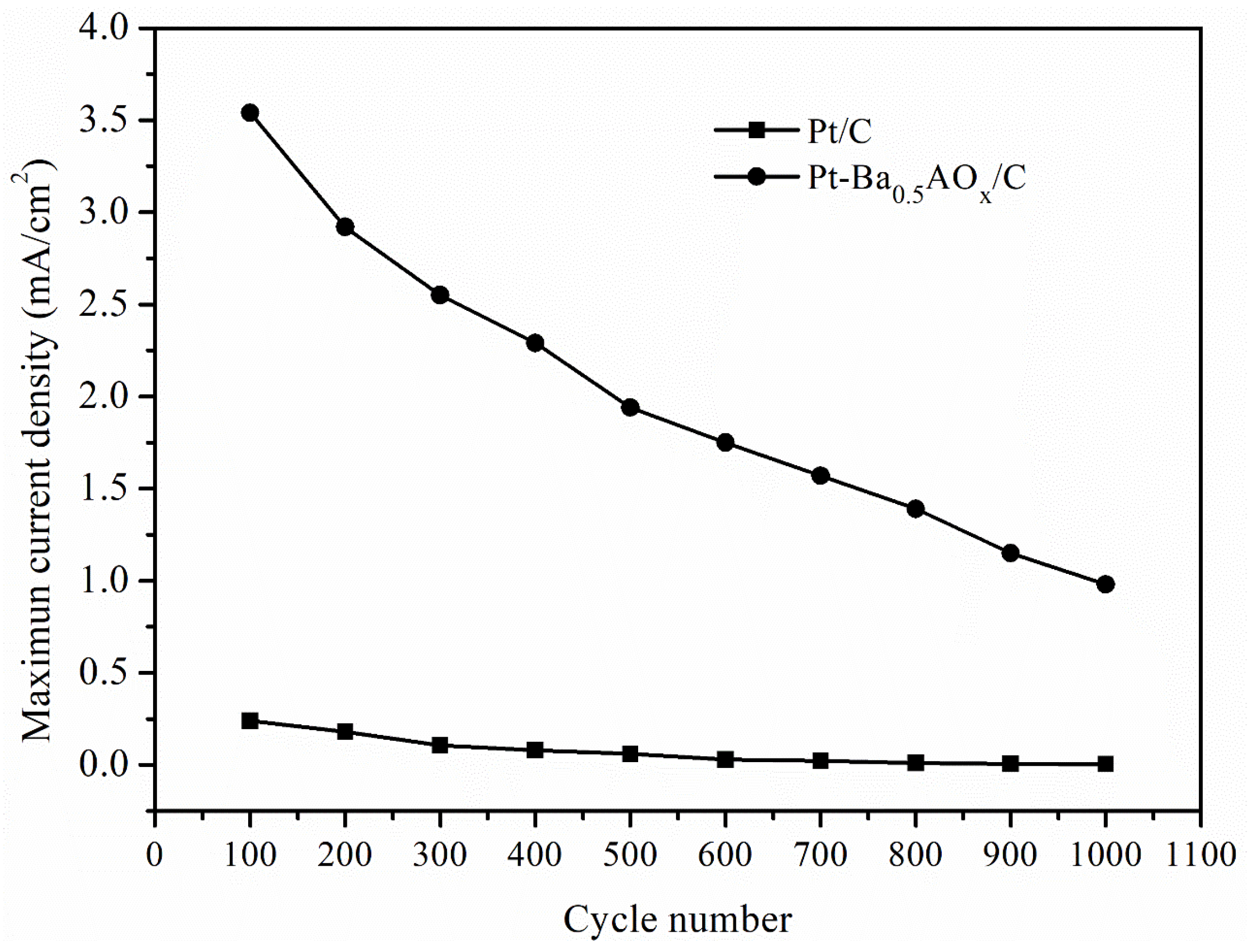
| Catalysts | Maximum Current Density (mA/cm2)/Potential (V) | ECSA (m2/g) | |
|---|---|---|---|
| Forward Peak (If) | Backward Peak (Ib) | ||
| 20%Pt/C | 1.47/0.65 | 0.4/0.47 | 33.02 |
| 20%Pt-Al2O3/C | 0.58/0.64 | 0.27/0.51 | 4.78 |
| 20%Pt-Ba0.5Al0.5Ox/C | 1.79/0.67 | 0.42/0.48 | 26.46 |
| 20%Pt-Ba0.5AlOx/C | 4.07/0.66 | 2.4/0.46 | 49.83 |
| 20%Pt-Ba0.33AlOx/C | 3.07/0.66 | 1.42/0.46 | 42.02 |
| 20%Pt-BaAl0.5Ox/C | 2.71/0.66 | 1.32/0.46 | 33.08 |
| 20%Pt-BaAl0.33Ox/C | 1.87/0.67 | 0.77/0.48 | 28.58 |
© 2020 by the authors. Licensee MDPI, Basel, Switzerland. This article is an open access article distributed under the terms and conditions of the Creative Commons Attribution (CC BY) license (http://creativecommons.org/licenses/by/4.0/).
Share and Cite
Chiang, T.H.; Hou, W.-Y.; Hsu, J.-W.; Chen, Y.-S. Pt-Amorphous Barium Aluminum Oxide/Carbon Catalysts for an Enhanced Methanol Electrooxidation Reaction. Catalysts 2020, 10, 708. https://doi.org/10.3390/catal10060708
Chiang TH, Hou W-Y, Hsu J-W, Chen Y-S. Pt-Amorphous Barium Aluminum Oxide/Carbon Catalysts for an Enhanced Methanol Electrooxidation Reaction. Catalysts. 2020; 10(6):708. https://doi.org/10.3390/catal10060708
Chicago/Turabian StyleChiang, Tzu Hsuan, Wan-Yu Hou, Jia-Wei Hsu, and Yu-Si Chen. 2020. "Pt-Amorphous Barium Aluminum Oxide/Carbon Catalysts for an Enhanced Methanol Electrooxidation Reaction" Catalysts 10, no. 6: 708. https://doi.org/10.3390/catal10060708
APA StyleChiang, T. H., Hou, W.-Y., Hsu, J.-W., & Chen, Y.-S. (2020). Pt-Amorphous Barium Aluminum Oxide/Carbon Catalysts for an Enhanced Methanol Electrooxidation Reaction. Catalysts, 10(6), 708. https://doi.org/10.3390/catal10060708






